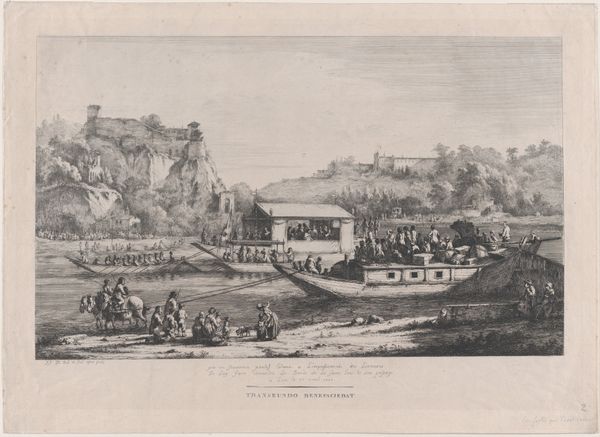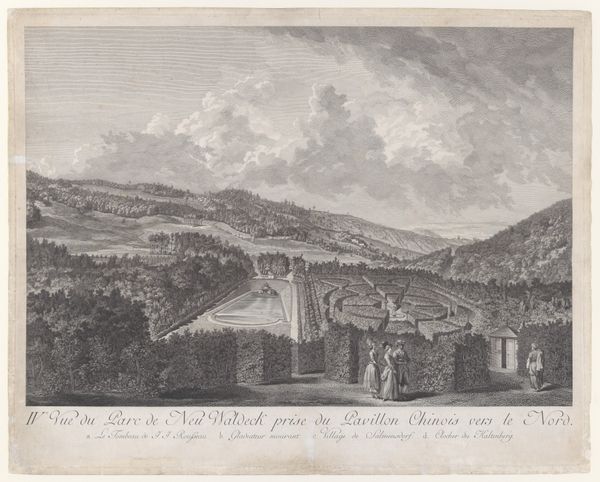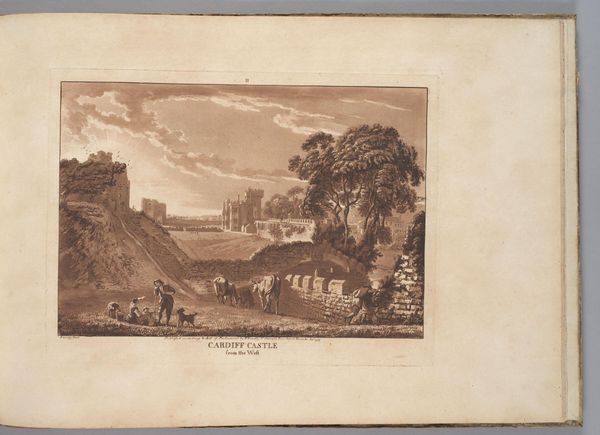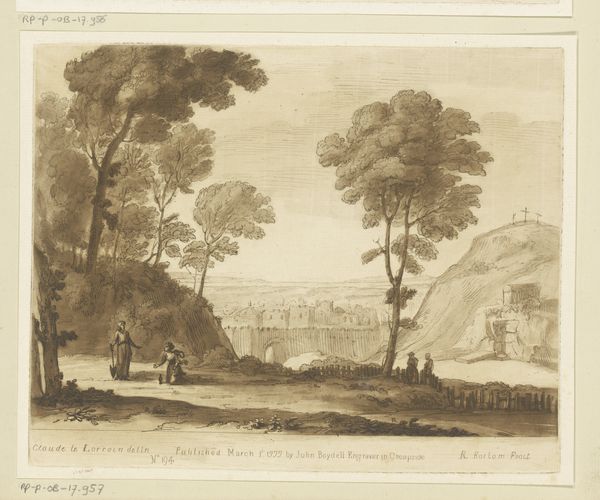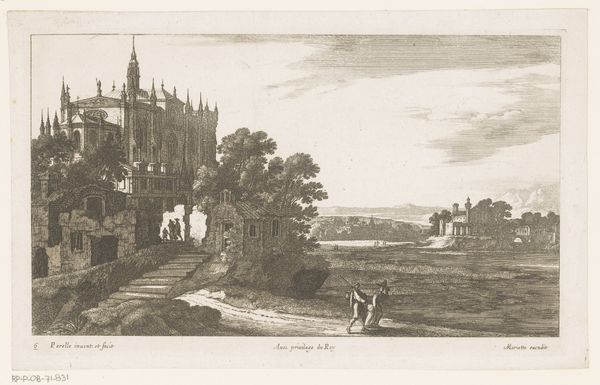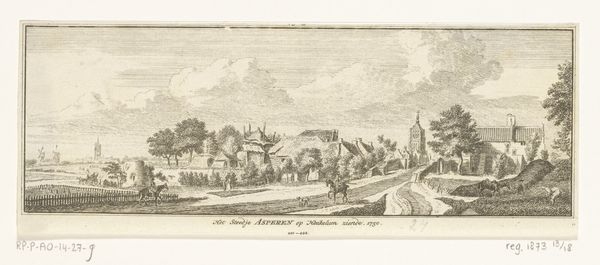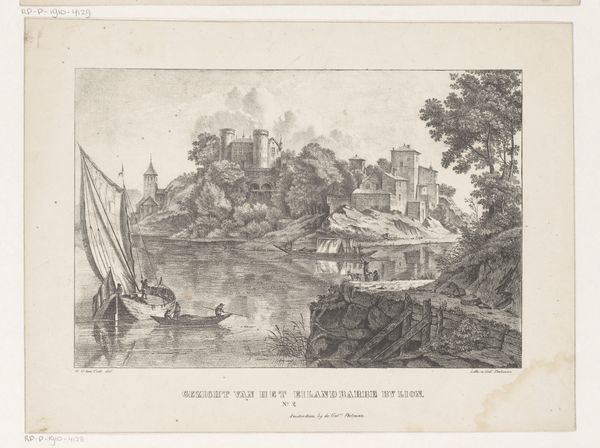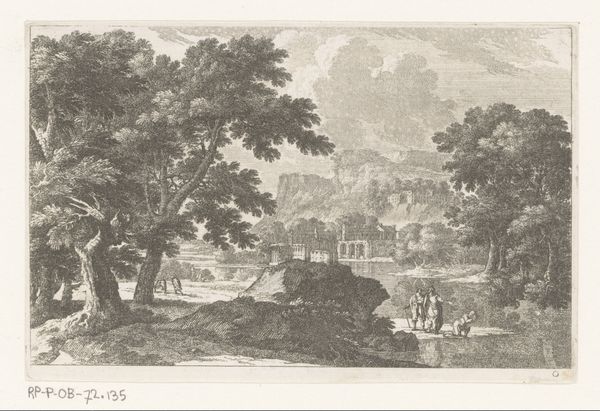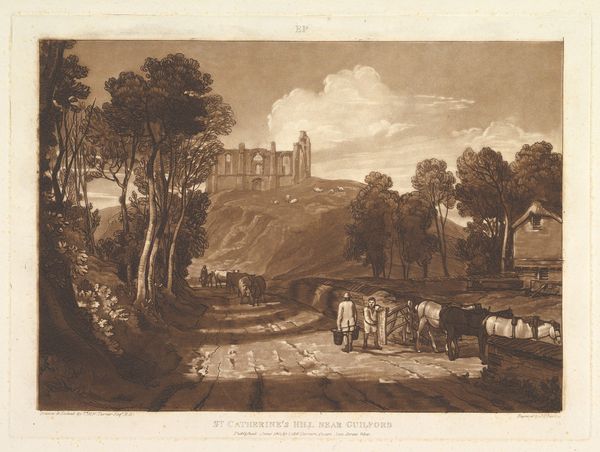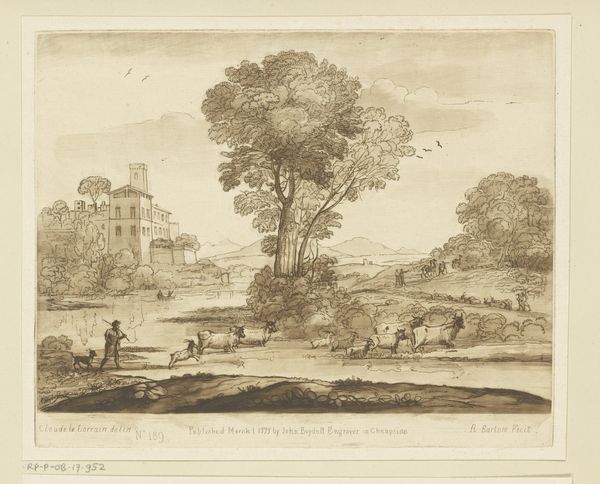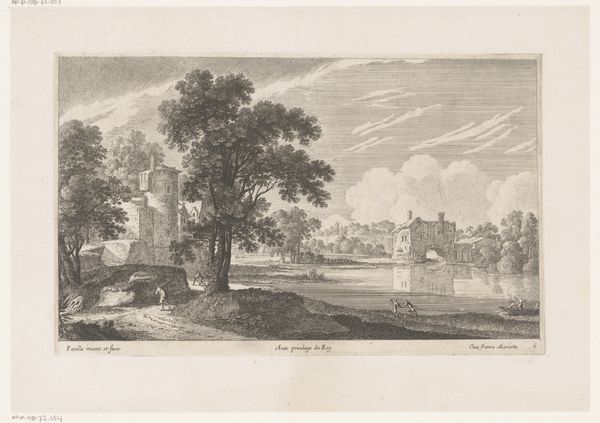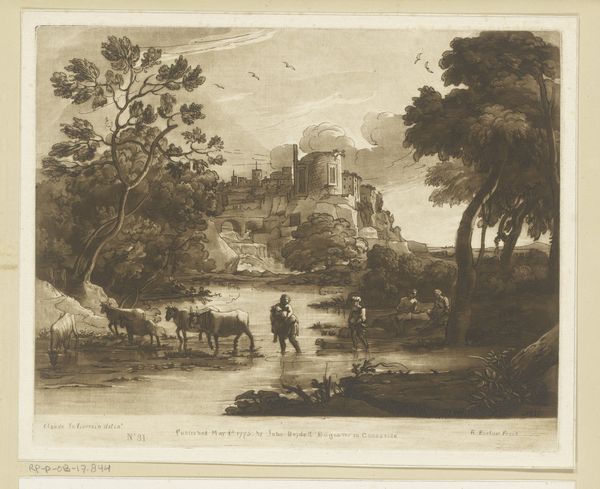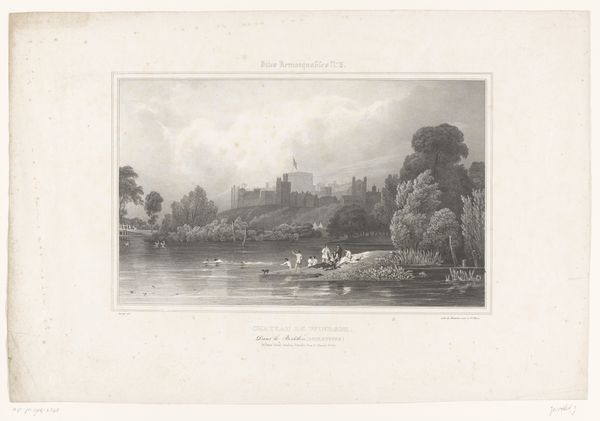
etching
#
aged paper
#
toned paper
#
light pencil work
#
etching
#
old engraving style
#
sketch book
#
landscape
#
personal sketchbook
#
romanticism
#
pen-ink sketch
#
sketchbook drawing
#
watercolour illustration
#
sketchbook art
Dimensions: height 430 mm, width 590 mm
Copyright: Rijks Museum: Open Domain
Curator: Georg Osterwald’s “Sayner Hütte en het slot Sayn," dating somewhere between 1813 and 1884, rendered in etching, invites us to consider landscape not merely as scenery, but as a document of industry and social hierarchy. Editor: Mmm, I'm immediately struck by the peace of it all. It's faded but incredibly detailed—the sort of scene you’d want to lose yourself in; there's something wonderfully serene about this rural idyll and those crumbling ruins perched above the modern houses down below. Curator: The etching process itself is central here. Observe the subtle gradations of tone, achieved through the laborious application of acid to the metal plate. Consider the labor invested in capturing this vista and how the etching medium helped disseminate this image across geographical boundaries. It highlights Saynerhütte’s status as both subject and commodity. Editor: And yet, beyond that technical skill, it whispers of Romantic longing, right? That shepherd boy minding his sheep…the romantic notion of ruin and a castle from days of yore is something more that a tourist trinket. Do you get a sense of how people worked this land to be alive? Curator: Precisely! Romanticism, as filtered through the burgeoning industrial reality of the 19th century, is crucial here. The materials themselves—the etched lines on paper—became a form of production, contributing to a visual economy that romanticized but also subtly acknowledged industrial progress. It presents nature tamed, processed and available for consumption. Editor: I love that: 'Nature, tamed!' What a way to put it. Thinking of nature today is so vastly different than what someone gazing on this image at that time would consider: that even nature needs us, or maybe, how small our footprint even could be... Curator: In conclusion, Osterwald's etching encapsulates the complex relationship between industrialization, romanticism, and the material culture of the early 19th century. Editor: I am moved! This little landscape whispers such a huge and poignant tale of longing, process and transformation. Thank you.
Comments
No comments
Be the first to comment and join the conversation on the ultimate creative platform.
